THE IPC ACOUSTIC ENERGIZERS: Best Tweak Ever??
|
|
|
I recall a conversation that a famous scientist once had with a layman, an author. The author had commented that his inspiration comes from nothing more than simply sitting around waiting for inspiration to strike, which could be anytime, anywhere. Expecting the big-time scientist to pooh-pooh this as being unstructured and ill-disciplined, the response was, “That is the way I make my discoveries too. Through serendipity.” My point is this – objectivist audiophiles who scream reptile lubricant every time they see a product that cannot be easily explained by accepted laws of science, need to remember two things. One, science is not a science. Discoveries can happen to anyone anytime, anywhere. Two, business is about making money. If a lone wolf scientist makes a new discovery, say a fantastic new kind of laser, he would most likely not know what to do with it, let alone how to maximize profits from that discovery (Harrison Ford’s 2010 movie “Extraordinary Measures”, based on Geeta Anand’s book, used this as a secondary theme). If he wants to make money from his invention – as opposed to simply donating it wholesale to the world at large – he needs to take it to a businessman who knows how to monetize it. And this businessman needs to make a product and protect the discovery from being copied by competitors, hence the secrecy surrounding it. But it’s a double-edged sword. Keep the discovery secret, you own it but the general public may not believe it’s real. ENTER THE AE The aforesaid science utilized by the Acoustic Energizer is a technology marketed as “Euphoria Technology” – a name given to all products manufactured by IPC of Hong Kong. Euphoria Technology generates a “prescribed and stable” PVA field. PVA stands for Proton Vibration Alignment. In the words of their primary marketing brochure: “An atom has three major particles, namely Protons, Electrons and Neutrons. The PVA Field created by Euphoria Technology aligns the vibration and movement of protons and electrons in all matter so that their physical properties are fundamentally enhanced. Euphoria Technology is based on quantum mechanics operating on the scale of picometers, i.e., picotechnology. Picotechnology refers to the manipulation of matter on the scale of trillionths of a meter (10-12 m), and is much more advanced than traditional nanotechnology. Euphoria Technology was invented by IPC and has been successfully applied to products in different industries.”
IPC claims the AE will align the vibration and movement of the air at a sub-molecular level, thus leading to a clearer sound projection over a distance. It is important to note that the unit makes no claims to changing the tonal balance or structure of the music itself, a theme to which I will return later in this review. Positioning the AE is either tricky or a dream, depending on your tweaking proclivities. You can place it on the floor, on supports, mounted on walls, the options are endless. I noticed that the local dealer himself put one unit each on the floor directly behind each speaker. The message is, feel free to experiment. Unlike some accessories that prescribe very strict placement instructions which are not to be deviated from on pain of death, IPC positively exhorts each listener to find the best location(s) in his or her own environment. I was also reminded to remove the units completely from the room if I wanted to listen sans AE, as simply switching them off results in residual emanation that could color my results. LISTENING
The Burrows track is a torture track due to its high mid-band energy. My AN speakers always exhibited a slight hardening when Burrows lets rip with his strong heldentenor. John Constable’s piano is set behind Burrows and to the left, and always sounds smaller than life-sized at normal listening volumes. Cat Stevens’ track has lots of predominantly mid to mid-low range energy with an electronic sheen overlaying the whole 1970 recording. And finally the Coltrane/Monk cut is great for hearing JC at his melismatic best during his solo when Monk strolled. On an off-topic note, Coltrane famously remarked that Monk “does not give support” for his extended improvisatory forays, but in his defense Monk probably felt that, without a piano’s harmonic restrictions, the soloist can find more interesting lines. Sonny Rollins’ seminal recording “Way Out West” was borne of the same need to unshackle from restraint and allow the harmony to flow once again. With 1 AE on floor between speakers:
Burrows voice gained some clarity and detail. For example his intakes of breath were more pronounced. The piano also sounded slightly bolder than before. Overall, while Burrows still sounded hard during louder passages, the AEs took the recording one notch up towards a live performance. On the Coltrane/Monk track, bass drum seems a tad deeper and more resonant and imaging overall feels more solidly placed. There was no change in tonality whatsoever, but I did detect more clarity in JC’s complicated solo lines. Wild World definitely sounded clearer in the bass, and Stevens’ voice sounded less “scattered”. The final D-flat chord also seemed to hang in the air a little longer than before. But that pesky electronic sheen was still there. With 2 AEs on the floor in front of each speaker (angled to face the listener):
[illustrations courtesy of Modularaudio.com]
On Gortnomona, there were further gains in vocal clarity and focus. Piano bass notes were also clearer and more resonant, and the entire piano also seemed to have increased in size. During a fermata where Burrows glissed the word “weeping….”, it literally gave me goose bumps. That never happened before from that track. Stevens’ famous song also gained in expressiveness, with greater gradations from soft to loud. More tellingly, I was toe-tapping and rubber-necking quite unconsciously, until I caught myself doing them. Trinkle Tinkle definitely sounded more exciting, as if the pace and lilt had increased (no, I didn’t measure the tempi on a metronome). The background also appeared to be quieter, though I couldn’t be absolutely sure about that. With 2 AEs on top of each speaker (angled to face the listener): The observations made earlier with the 2 AEs on the floor were largely similar here, except that there was a definite upward shift in the position of the piano and saxophone. The trap set, though, pretty much stayed where it was. I cannot claim to have enjoyed this new presentation of the performance as much. Wild World also saw a clear lift in perspective heightening, which could in some instances be beneficial for multi-mic’d pop or rock recordings by spreading out the instrument placements somewhat, if you like to play mixing engineer, but it was still not my cup of tea. Suffice it to say that the lifting effect, though subtle, was definite and repeatable in my system and room. The AEs can really influence the soundstage depending on where they are placed. How they do it is still a mystery to me. When posed the question, Vian Li, head honcho of IPC, was understandably coy about how the PVA field is created by his technology. He did clarify, however, that since protons are heavier than neutrons and electrons in an air molecule, by the time they travel from the speakers to the listener’s ears, they would have lost energy, thereby presumably leading to a loss of sonic fidelity. By “re-aligning” the proton field, this energy loss is reduced, but I still have no details as to how this re-alignment is done, and Vian Li is tight-lipped about it, leading to that pesky “double-edged sword” scenario outlined in my intro. From the above session, I came to the following initial conclusions about the AE. Having two AEs instead of one in my room definitely added a welcome sense of musicality to the tracks. This was especially obvious in Trinkle Tinkle; whereas pre-AE the music sounded stately and a little plodding, post-AE it picked up greater verve and excitement. The goose bump effect from Gortnomona is also a clear indication that the recording is now speaking to me more musically than before. I cannot explain why the AE should increase the musicality of a system, except to observe and record that it does. But the tonality of the system remained untouched throughout my listening with the AE. If your system unevenly emphasizes certain parts of the tonal range, or presents an electronic sheen on some recordings, as mine does, you will continue to hear them with the AEs in place. IPC make no claims that these devices will tune the timbre or harmonic structure of your system, so if you are already happy with your system in that respect, the AE will not disturb the status quo. SUMMING UP Over the next day or so, I continued to experiment with various other placements for the AEs. Given the short time I had, the best position seemed to be on the sides of the listening room halfway between the listening position and the loudspeakers. This gave me the optimal balance between image depth, intimacy and soundstage width. With every move of the AE, I was able to get a corresponding, repeatable and consistent change in my system’s soundstage. Like a mixing engineer, it will actually give you the chance –within reason – to “pan” instrument placements on the horizontal level within the soundstage. But even the most sophisticated modern mixing equipment cannot do what the AE does, namely allow you to move sound images upwards or downwards! This ability alone marks the IPC AE as a landmark product. The only thing I could not achieve in my room, and which I suspect will be the ideal presentation, is both width and centre focus in my soundstage. I think a third AE, had it been available to me, would have given me my cake and allowed me to eat it too. More would have been much better. I am reliably told (by my publisher Clement no less) that with five AEs, the system should begin to transform. Unfortunately, given the circumstances and review deadlines, I was unable to test this hypothesis. Perhaps Clement will give a better idea how more AE units will sound. Remember what I said about serendipity? Well, if this happened to Vian Li, then he built an entire empire around it.
Second Opinion from Clement Perry
The company, Innoworks Products Creation (IPC), has been in operation since early 2007 (mostly in Asia), and has a myriad of products aimed at the health, beauty, sports, musical instruments, automotive and agriculture industries (photo above). With this many ambitions, IPC’s inventor Vian Li, obviously has little time to worry about audiophile foibles. There’s a higher calling for IPC. The only reason audiophile products even exist is because Li’s an long-time audiophile. In early experiments, Li discovered his technology enhanced his stereo system greatly (or just about anything he applied it to) and decided to try them in other systems. It was the growing demand and success of Li’s first product – the Acoustic EQ – an attractive room treatment styled device – that launched the Euphoria Technology in Hong Kong. In addition to the AE “canisters,” the company also manufacturers a CD Energizer, LP Energizer, Sound Power AC conditioner and his most auspicious product to date, the Acoustic EQ. Fellow audiophile and friend David Caplan (co-inventor of the Shakti Holographs) and I visited IPC’s satellite facility located in Clearwater, Florida this past weekend. Besides the wonderful 80-degree weather and sunny skies, we got an hands-on introduction to the Euphoria Technology by Norbert Heuser. No, I still do not understand what they’re doing as Heuser is very hush-hush about the technology. But I am much better aware of how serious and devoted the folks at IPC are about improving our love for music as well as their concerns for our health and overall sense of well-being. Yes, I am aware how far out this is, but this is the very reason I went to Clearwater in the first place (and NO, I did not drink the juice!). Firstly, let me state for the record that, in my space, the AE “canisters,” as we like to call them, perform as advertised. Moreover, they have thus far outperformed the amazing Stein Harmonizers in terms of sheer power and overall effectiveness. I do not fully grasp how the AE’s work but do know they too are based on the mysterious science of quantum mechanics. Li says the Euphoria Technology works at the level of pico Technology which is a thousand times smaller than the more popularly known nano Technology. Heck, I never could confirm nor deny the claims or inner workings behind Jack Bybee’s Super Effect Bullets, Holger Stein’s Harmonizers, Ken Ishiguro’s RR-77 or the Lessloss Blackbodys – but to confirm their effectiveness was as easy as their installation. I’ve conducted experiments with these “canisters” in three different systems and the results were nothing short of astonishing. A single AE unit had slight but noticeable effects (like perhaps the Acoustic Revive RR77). However, as expected, the effects: improved image width, stability, space, bass, dynamics and improved vocal intelligibility becomes more apparent the moment two were added and placed nearer the corners behind the loudspeakers.
A third canister’s recommended placement is either in the middle of the room in the form of a triangle. While I’ve gotten excellent results with the AE directly behind my listening seat, this somewhat reduced some of the improved bass noticed when placed in the center of the room. However, when placed behind my listening seat, I got an improved sense of depth, width and soundstage. Taking an additional two “canisters” and placing these in the corners behind my listening seat extended the sense of transparency, depth, image specificity with an overall sense of bloom and musicality. So much so, I would highly recommend 4 or 5 “canisters” as this combination proved to provide the most musically intoxicating results. What I found most surprising was the sense of reduced compression in my space. This led to an increase in dynamic contrasts throughout the frequency extremes – not just the bass. I have never been able to detect gradations in the micro and macro areas with these level dynamics and realistic flow. EVER! That is most certainly high praise considering I’ve heard some serious stellar rigs in my life. I shall report in the coming weeks the improvements and further comparisons with the IPC products. These include the CD, LP, Sound Power AC conditioner and Acoustic EQ . As it stands now, the Acoustic Energizers are among the most powerful sound enhancers I have ever encountered and have changed my impressions of what is possible from a product that needs only to be placed in your listening room. The AE “canisters” are that impactful and therefore captured our collective imagination and attention. To be continued….
Specifications Price: $995 ea
|
Stereo Times Masthead
Publisher/Founder
Clement Perry
Editor
Dave Thomas
Senior Editors
Frank Alles, Mike Girardi, Russell Lichter, Terry London, Moreno Mitchell, Paul Szabady, Bill Wells, Mike Wright, and Stephen Yan,
Current Contributors
David Abramson, Tim Barrall, Dave Allison, Ron Cook, Lewis Dardick, John Hoffman, Dan Secula, Don Shaulis, Greg Simmons, Eric Teh, Greg Voth, Richard Willie, Ed Van Winkle, Rob Dockery, Richard Doron, and Daveed Turek
Site Management Clement Perry
Ad Designer: Martin Perry



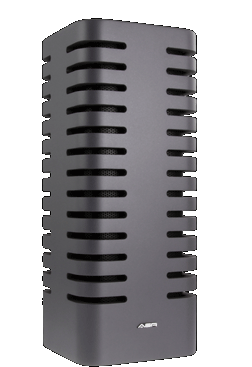 Physically, the AE unit looks rather unprepossessing. It could easily pass off as one of the myriad air ionizers or purifiers one sees in department stores and DIY shops nowadays. It stands about 30cm high, with horizontal slats all over its body, a toggle on-off switch and a small battery compartment on its base. A tiny, unobtrusive LED bulb located at the top of the unit blinks to indicate that the AE is on and functioning normally. If the battery is dead, the intermittent light stops blinking indicating a battery change is in order. According to the dealer, the battery is the heart of the AE. It is where the proprietary Euphoria Technology resides, and is claimed to last for three years from date of manufacture. When it runs out, a new replacement battery (approximately USD170) needs to be purchased. The rest of the unit is made of some kind of wood, painted in a dark grey satin finish, and sporting a single AER logo on one face.
Physically, the AE unit looks rather unprepossessing. It could easily pass off as one of the myriad air ionizers or purifiers one sees in department stores and DIY shops nowadays. It stands about 30cm high, with horizontal slats all over its body, a toggle on-off switch and a small battery compartment on its base. A tiny, unobtrusive LED bulb located at the top of the unit blinks to indicate that the AE is on and functioning normally. If the battery is dead, the intermittent light stops blinking indicating a battery change is in order. According to the dealer, the battery is the heart of the AE. It is where the proprietary Euphoria Technology resides, and is claimed to last for three years from date of manufacture. When it runs out, a new replacement battery (approximately USD170) needs to be purchased. The rest of the unit is made of some kind of wood, painted in a dark grey satin finish, and sporting a single AER logo on one face.  It is claimed that the AE is able to affect the soundstage depending on where they are placed. To test this, I devised a simple protocol for the first session with the AE in my dedicated listening room. I chose three cuts of music from different genres, Stuart Burrows singing Gortnomona (accompanied by John Constable on the piano, from “Stuart Burrows Sings To The Land of Dreams” Decca/L’Oiseau-Lyre DSLO 43); Cat Steven’s Wild World (from “Tea for the Tillerman” A&M Records SP 4280); and Thelonious Monk/John Coltrane’s Trinkle Tinkle (from “Thelonius Monk with John Coltrane” Jazzland OJC Reissue OJC039). I listened to each cut under three different conditions; AE outside the room, one AE on the floor (in front of and between the speakers), two AEs on the floor in front of each speaker, and finally two AEs on top of each speaker. Due to the corner placement of my Audio Note AN/E/SPe HE loudspeakers, I could not try the AEs behind the plane of the speaker drivers.
It is claimed that the AE is able to affect the soundstage depending on where they are placed. To test this, I devised a simple protocol for the first session with the AE in my dedicated listening room. I chose three cuts of music from different genres, Stuart Burrows singing Gortnomona (accompanied by John Constable on the piano, from “Stuart Burrows Sings To The Land of Dreams” Decca/L’Oiseau-Lyre DSLO 43); Cat Steven’s Wild World (from “Tea for the Tillerman” A&M Records SP 4280); and Thelonious Monk/John Coltrane’s Trinkle Tinkle (from “Thelonius Monk with John Coltrane” Jazzland OJC Reissue OJC039). I listened to each cut under three different conditions; AE outside the room, one AE on the floor (in front of and between the speakers), two AEs on the floor in front of each speaker, and finally two AEs on top of each speaker. Due to the corner placement of my Audio Note AN/E/SPe HE loudspeakers, I could not try the AEs behind the plane of the speaker drivers. 
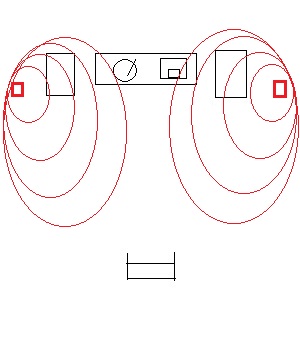

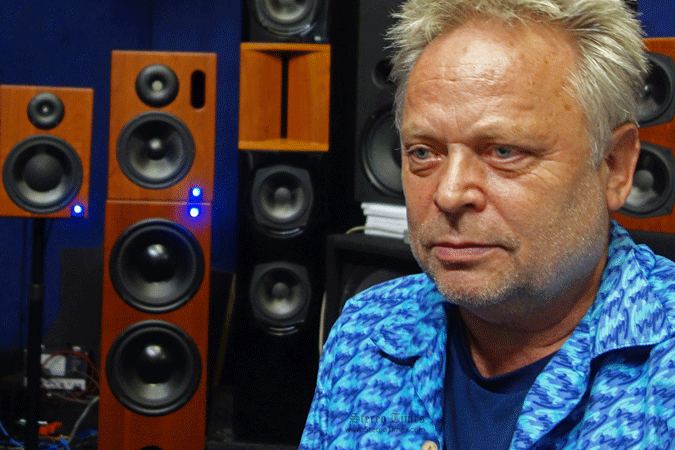
 I want to first thank Stephen Yan, who gave me the heads up on this new and exciting company called IPC of Hong Kong (with a US satellite office in Clearwater, Florida). Let me make this short and quick. After only a short (maybe half-hour) demonstration of the technology which I still do not understand, followed up with a listening session in my humble abode, compliments of IPC’s Director of sales, Norbert Heuser (photo above), I was totally impressed by this technology.
I want to first thank Stephen Yan, who gave me the heads up on this new and exciting company called IPC of Hong Kong (with a US satellite office in Clearwater, Florida). Let me make this short and quick. After only a short (maybe half-hour) demonstration of the technology which I still do not understand, followed up with a listening session in my humble abode, compliments of IPC’s Director of sales, Norbert Heuser (photo above), I was totally impressed by this technology. 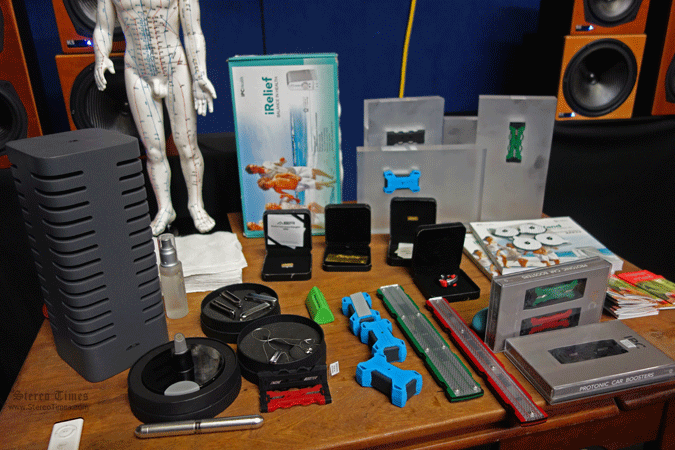
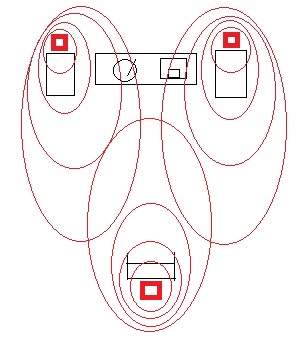




Be the first to comment on: THE IPC ACOUSTIC ENERGIZERS: Best Tweak Ever??